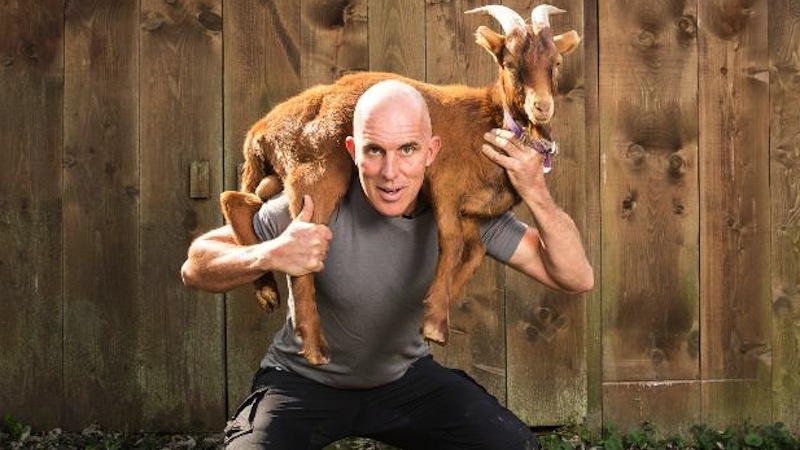
New York Times bestselling author explores partnerships with animals and human performance in new series.
Author Christopher McDougall is no stranger to the world of human performance. His breakout book Born to Run sold more than a million copies and topped the New York Times Bestseller list for months.
Born to Run tells the story of the Tarahumara people of Copper Canyon and also of ultrarunner Micah True. As a follow-up, Christopher explored the world of human strength, endurance and movement with another bestseller — Natural Born Heroes — which centers on the story of the Cretan resistance in World War II.
During his research for Natural Born Heroes, specifically in relation to the concepts of human performance, nutrition and natural movement, all trails led Christopher to Dr. Phil Maffetone, who is featured at length in the book discussing endurance training and fat-burning.
So after those two successes, what’s next for Christopher to explore? Animals. Or more specifically, humans working side-by-side in a symbiotic relationship with animals as they have for centuries.
The topic has become a new ongoing “Well” series in the New York Times as well as the fodder for an upcoming new book.
Not by coincidence, Christopher stumbled upon this topic both in his research for Natural Born Heroes and while embarking on his own journey with rehabilitating a rescue donkey named Sherman. In the book the Cretan rebels kidnap a Nazi general and transport him across the rugged terrain of Crete, using their own innate abilities for survival, and a donkey.
“One thing I started to realize while researching Natural Born Heroes, and one I think Phil opens your mind to, is the animal aspect of humans. We are really animals. We like to think we’re not animals, but the truth is we are.”
Christopher said it was while he was on Crete hiking the escape route used by the rebels that the things he was talking about with Phil finally sank in.
“When you are out there far away from the lights of any town, no store and no bottle of water, you start to think ‘I am really an animal,’ and you start surviving like an animal.”
“You’re literally like a wolf roaming the forest.”
Christopher said this led to him taking a closer look at the animals we really are, and he became intrigued with the idea for a new project.
At the heart of the story was his own goal to run with Sherman in the World Championship Pack-Burro Race, a high-altitude ultramarathon in the mountains of Colorado. In training for the race he discovered he not only needed to work on his own fitness and human performance, he also had to forge a partnership with a donkey he was asking to run by his side for 29 miles up and down a 13,000-foot mountain pass.
“You get that with working with burros. If you don’t put yourself inside their head you are not going anywhere.”
And thus his interest in humans working with animals to do extraordinary things began to expand. He extended his focus to explore other partnerships between people and animals, finding stories from sled-dog racers, falconers, a woman who trains zebras for riding, and even the famous “Dog Whisperer” Cesar Milan.
“What I wanted to discover really was not about domination but rather cooperation,” he says. For example, he’s learned in the process of training his burro for the race that he can’t make the animal do it — he has to make the burro think it was his own idea.
He says this same concept spills right over into the human world, since after all we are all animals.
“If you take the most efficient business manager in the world they’ll probably tell you the exact same thing,” Christopher says. “Don’t give your co-workers orders. Make them think it’s their idea.”
He says it’s all about nature.
“I’m taking this idea I got from Phil, which is don’t forget your own animal nature, and I’m seeing where it leads me. I’m looking at stories specifically as humans and their partnerships with other animals, and also about natural fitness and natural movement.”
He says he’s convinced that the concepts of health, fitness and partnering with animals all go hand-in-hand.
“Your animal is not going to partner with a weak partner. If you’re not in shape, if you are coughing,or not showing up with a certain energy, you’ll have more trouble than someone who is mentally and physically strong.”
While training Sherman, Christopher subsequently acquired two more donkeys at his Pennsylvania farm, where he also raises goats, sheep and chickens, and keeps four cats and one pet goose.
He says the lessons from this project also provide an overwhelming message for society and humanity as a whole.








